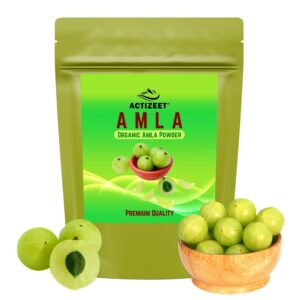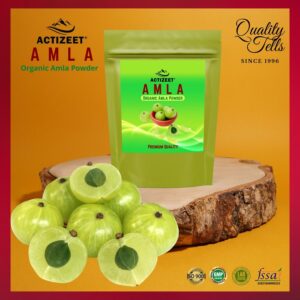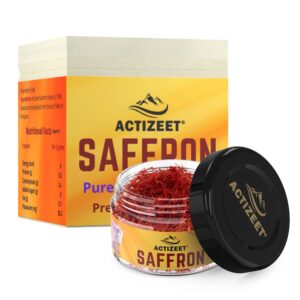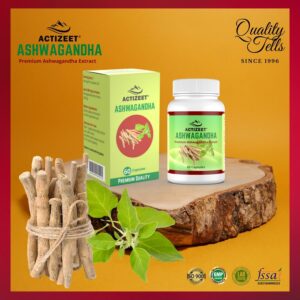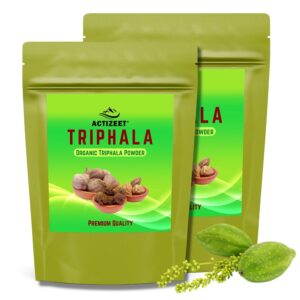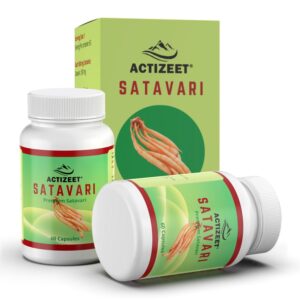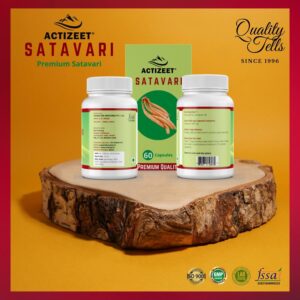This blog post is about the benefits and uses of amla for skin. Amla or Indian gooseberry has been used in India for various medicinal purposes since time immemorial. It is a rich source of vitamin C, iron, and calcium and can be used to treat many skin ailments like leucoderma, sunburn, wrinkles, and dandruff. As the article points out, there are so many areas where this incredible fruit will be able to help you improve your health. Check it out to see if it might be right for you!
Table of Contents
ToggleWhat is Amla and what are the benefits of Amla?
Amla, also known as Indian Gooseberry, is a small, round fruit that is native to India. The Amla fruit is traditionally used in Ayurvedic medicine and has been used for centuries to treat a variety of ailments. Amla is rich in Vitamin C and antioxidants, making it an excellent choice for skin care.
Amla can be used topically or taken internally to improve the health of your skin. When applied to the skin, Amla helps to reduce inflammation and redness. It can also help to brighten the complexion and even out skin tone. Amla is also effective in treating acne and other skin conditions.
When taken internally, Amla helps to detoxify the body and improve digestion. It can also help to boost the immune system and fight off infection. Amla is a natural source of Vitamin C, which is essential for healthy skin. Including Amla in your diet or using it topically can help you achieve clear, radiant skin.
Why is amla beneficial for the skin?
Amla is an Indian superfruit that has been used in Ayurvedic medicine for centuries. The amla fruit is incredibly rich in Vitamin C, with one small fruit containing 30% of the recommended daily value. Vitamin C is a powerful antioxidant that helps to protect cells from damage, and it is also essential for collagen production. Collagen is the main structural protein in the skin, and it plays a vital role in skin elasticity and firmness.
Amla also contains other important nutrients for skin health, including flavonoids, carotenes, and minerals like iron and copper. These nutrients work together to boost skin radiance and protect against environmental stressors like pollution and UV damage. Amla’s unique composition makes it an ideal ingredient in skincare products for all skin types, including sensitive skin.
How can you use amla for skin concerns?
Amla is an incredible fruit for your skin. It is packed with antioxidants that help to protect your skin from damage, and it also has anti-inflammatory properties that can help to soothe and calm irritated skin. Amla can be used in a variety of ways to help improve your complexion.
One way to use amla for skin is to make a paste out of the fruit and apply it directly to your face. Leave the paste on for about 15 minutes before washing it off with warm water. This simple mask can help to brighten and nourish your skin.
Another way to use amla for skin is to mix the fruit with honey and yogurt to create a smoothie. Drink this delicious smoothie every day to help improve your complexion from the inside out. The nutrients in amla will help to nourish your skin cells and the honey and yogurt will help to keep your skin hydrated.
If you are looking for a natural way to improve your complexion, try using amla for skin concerns. You may be surprised at how well this humble fruit can work wonders for your skin!
Amla for skin whitening
Amla is a common name for the Indian gooseberry. The fruit is commonly used in Ayurvedic medicine and has been shown to be effective for a variety of skin conditions. Amla is rich in Vitamin C, which is known to be an effective skin-lightening agent.
In addition, amla contains ellagic acid, which has been shown to inhibit melanin production. Amla can be used topically or ingested to lighten skin.
To use amla topically, mix the powder with water to form a paste and apply it to the face. Leave the paste on for 20 minutes before washing it off. To ingest amla, mix the powder with water or juice and drink it once daily. Both topical and internal use of amla has been shown to be effective for skin lightening.
However, it is important to note that amla will not provide immediate results. It may take several weeks or even months of regular use before results are noticeable.
Amla for skin pigmentation
Amla is an Indian fruit that has been traditionally used for centuries to treat a variety of ailments. One of its most well-known uses is for treating skin pigmentation.
Amla contains a high concentration of Vitamin C, which is known to be effective in lightening the skin. It also has anti-inflammatory and antioxidant properties, which can help to reduce the appearance of pigmentation. To use amla for treating skin pigmentation, you can either consume it orally or apply it topically.
When consumed orally, amla can help to improve overall skin health and reduce inflammation. When applied topically, amla can help to lighten the skin and reduce the appearance of pigmentation.
Amla for skin tightening
Amla is a popular Ayurvedic herb that has been used for centuries for its wide range of health benefits. One of its lesser-known uses is as a skin-tightening agent.
Amla can be used topically or consumed orally to help tighten the skin and reduce wrinkles. It is rich in antioxidants and vitamin C, both of which are essential for healthy skin.
Amla also stimulates collagen production, which helps keep the skin looking young and plump. If you are interested in using amla for skin tightening, speak to your doctor or an Ayurvedic practitioner to see if it is right for you.
Can amla be taken internally?
Yes, amla can be taken internally! In fact, many people find that consuming amla regularly helps to improve their overall complexion.
Amla is rich in antioxidants and vitamin C, both of which are essential for healthy skin. Vitamin C helps to boost collagen production, while antioxidants protect the skin from damage caused by free radicals.
In addition to its benefits for the skin, amla is also good for your hair and nails. It helps to promote hair growth and strengthens nails.
Side effects of amla
Side effects of amla are rare but can include upset stomach, vomiting, and diarrhea. More serious side effects include low blood sugar levels, skin rashes, and hives. If you experience any of these side effects, stop taking amla and seek medical attention immediately.
Conclusion
Amla is an incredible natural ingredient that can do wonders for your skin. If you’re looking to improve your complexion, Amla is definitely worth considering. From reducing wrinkles to an evening-out skin tone, Amla can help you achieve the beautiful, radiant skin you’ve always wanted. Give it a try and see for yourself!
Best Amla Powder
-
Rated 4.86 out of 5
₹1,200.00Original price was: ₹1,200.00.₹900.00Current price is: ₹900.00. Incl. GST ADD TO CART Buy Now -
Rated 0 out of 5
₹3,600.00Original price was: ₹3,600.00.₹2,100.00Current price is: ₹2,100.00. Incl. GST ADD TO CART Buy Now -
Rated 0 out of 5
₹2,400.00Original price was: ₹2,400.00.₹1,600.00Current price is: ₹1,600.00. Incl. GST ADD TO CART Buy Now
Amla Powder Reviews
Related Products
-
Himalayan Shilajit, Pure shilajit, Shilajit, SHUDDH SURYA TAPI SHILAJIT
Rated 4.74 out of 5₹4,950.00Original price was: ₹4,950.00.₹3,950.00Current price is: ₹3,950.00. Incl. GST ADD TO CART Buy Now -
Rated 4.86 out of 5
₹2,400.00Original price was: ₹2,400.00.₹1,600.00Current price is: ₹1,600.00. Incl. GST ADD TO CART Buy Now -
Rated 4.82 out of 5
₹2,400.00Original price was: ₹2,400.00.₹1,600.00Current price is: ₹1,600.00. Incl. GST ADD TO CART Buy Now -
Rated 4.84 out of 5
₹2,400.00Original price was: ₹2,400.00.₹1,600.00Current price is: ₹1,600.00. Incl. GST ADD TO CART Buy Now
-
Rated 4.00 out of 5
₹2,400.00Original price was: ₹2,400.00.₹1,600.00Current price is: ₹1,600.00. Incl. GST ADD TO CART Buy Now -
Rated 4.80 out of 5
₹2,400.00Original price was: ₹2,400.00.₹1,600.00Current price is: ₹1,600.00. Incl. GST ADD TO CART Buy Now -
Rated 4.71 out of 5
₹2,400.00Original price was: ₹2,400.00.₹1,600.00Current price is: ₹1,600.00. Incl. GST ADD TO CART Buy Now -
Rated 0 out of 5
₹2,400.00Original price was: ₹2,400.00.₹1,600.00Current price is: ₹1,600.00. Incl. GST ADD TO CART Buy Now
Related posts:
- Unveiling the Secret to Radiant Skin: Amla Powder for Glowing Skin
- Nourish and Rejuvenate: Amla Powder for Dry Skin Relief
- Harnessing the Power of Amla Powder for Radiant Skin: Your Ultimate Guide to Amla Powder for Skincare
- Amla Powder in Panaji (Goa)
- Amla Powder in Gangtok (Sikkim)
- Amla Powder in Kochi (Kerala)
- Amla Benefits: The Ultimate Guide to the Health Advantages of Indian Gooseberry
- Amla Powder in Shimla (Himachal Pradesh)


